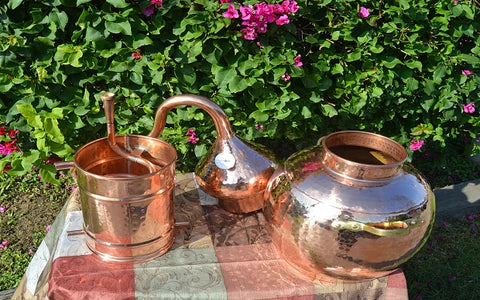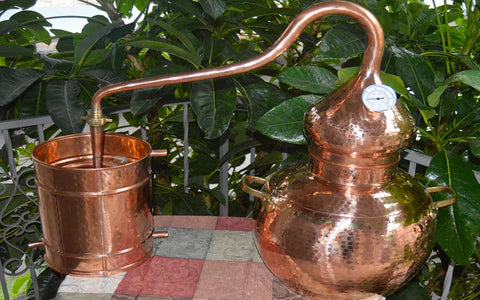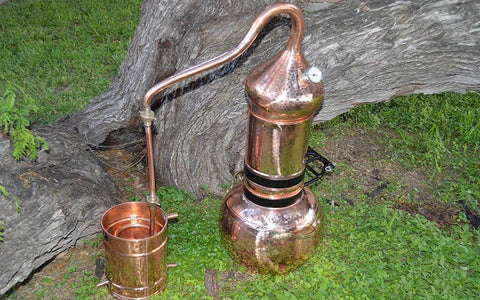Becoming an expert at distilling your own alcohol, water, or essential oils at home means that you need to become familiar with every part of your copper still. Moonshiners run into all kinds of problems, and many distillers over the years have had to learn what to do on the go. Take advantage of their wisdom and become familiar with your copper still, so you can avoid making their mistakes.
Types of Moonshine Stills
Whether you call it a “moonshine still”, a “whiskey still,” or just a plain old “still,” you want a copper still. Many stills are made of stainless steel and then offer copper mesh to help filter your spirits, but an all copper still is generally better.
Moonshine stills come in a variety of designs and sizes. The two main designs are the pot still and the column still. Each design is used to distill different products, and a flip top column still might be one of the best stills for sale, because it gives you the versatility to distill practically anything you want.
Parts of a still
- Pot: Also called the “boiler,” the pot holds your mash, is placed directly over your heat, and attaches to the column or the onion head at the top.
- Column: A column still includes a cylinder with inner compartments and platforms that distill in a different method than a pot still. These may be solid, split top, or flip top.
- Onion head: Commonly shaped like an onion, having a thermometer built in is best. It attaches to the condenser coil.
- Condenser coil:A long thin tube of copper, the coil allows the steam to cool into your distillate
- Collection cup: Use a glass, metal, or pottery container to collect the distillate at the spout of the condenser coil. Never use plastic containers.
Distilling Accessories
- Propane burner: Distilling alcohol can produce dangerous flammable vapors. it is always recommended to distill outdoors or in a well-ventilated area. Portable propane burners with stable bases can work well as controllable heat sources for distillation.
- Ice packs or hose: You need a cooling system to keep your condenser coil chilled. Running cool water continuously through a hose or packing the coil in ice can help maintain temperature.
- Turbo yeast: When making your whiskey or moonshine mash, you will need to control the fermentation in order to produce high quality alcohol.
- Flour: To seal the seams between parts of your copper still, you can make a paste from flour. You will need to do this with every run, so keep flour on hand.
- Copper cleaner or lots of vinegar: It is important to clean your whiskey still inside and out after every use, so find a copper cleaner you like, or stock up on white vinegar for a traditional cleaning method.
Distilling Safety Equipment
- Thermometer: It is important to monitor your still’s temperature. The best stills include a thermometer built into the onion head.
- Fire extinguisher: Working with flame and flammable vapors includes danger. Always practice fire safety and be prepared.
- Insulated gloves: Working with heat and hot metals, you can get burned. Protect yourself with gloves that extend to the elbow and that can withstand temperatures up to 250 degrees Fahrenheit.
- Eye protection: Working with hot steam and potentially dangerous alcohol vapors can permanently damage your eyes.
- Towels: In case of spills or leaks, have some extra rags, cloths, or towels handy to help contain any mess.
You will also need a good place to dump out the vinegar, mash, or water that you use in your copper whiskey still pot when cleaning it, making moonshine, or distilling essential oils. Since these materials may be harmful to plant life, choose a site where they won’t do too much damage, or where you aren’t concerned about the damage they cause. Never dump your materials directly down a drain or into an outside water source.
Article by: Jim Thomas



